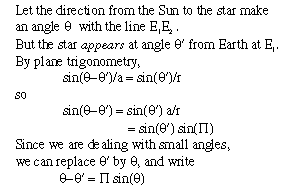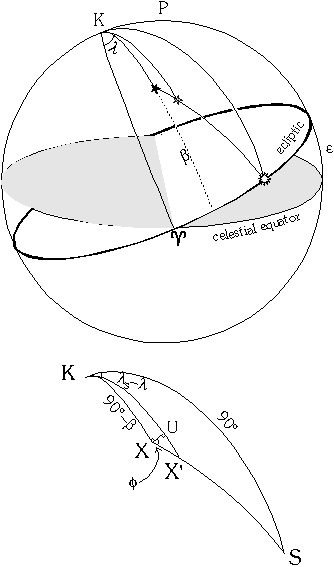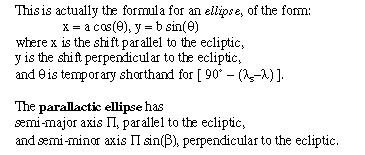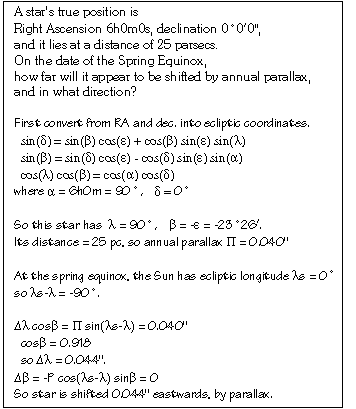
Geocentric or diurnal parallax varies with the daily spinning of the Earth around its axis. Annual parallax is caused by the Earth's yearly orbit around the Sun.
The Earth shifts by 2a from side to side, where a is the radius of the Earth's orbit (assumed circular) = 1 Astronomical Unit.

For the star S1, the maximum shift occurs as the Earth moves from position E1 to E2. If the distance between the Sun and the star S1 is r, then we have:
![]()
and since a/r is always extremely small, we may write
![]()
If the star is not at S1, but at some other arbitrary position S2, then the shift in position as Earth moves from E1 to E2 will appear less.

The apparent shift is towards the Sun, and it alters the star's ecliptic longitude (so this is another occasion for using ecliptic coordinates). If the star is not in the plane of the ecliptic, there is a shift in ecliptic latitude too.




So during the year, the star appears to trace out a parallactic ellipse, which is a reflection of the Earth's orbit. For a star on the ecliptic, it reduces to a straight line; for a star at the pole of the ecliptic, it becomes a circle.
The size of a star's parallactic ellipse yields its distance, in units
of parsecs (parallax-seconds):
a star at 1 parsec would have parallax of 1 arc-second. (In fact, no star
is this close.)

Return to index.